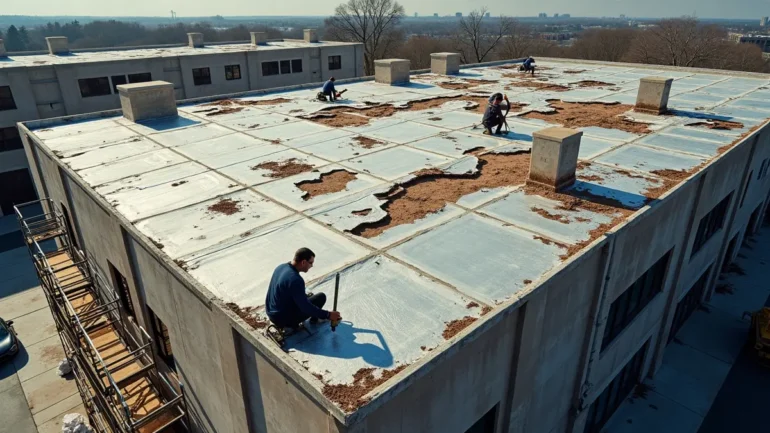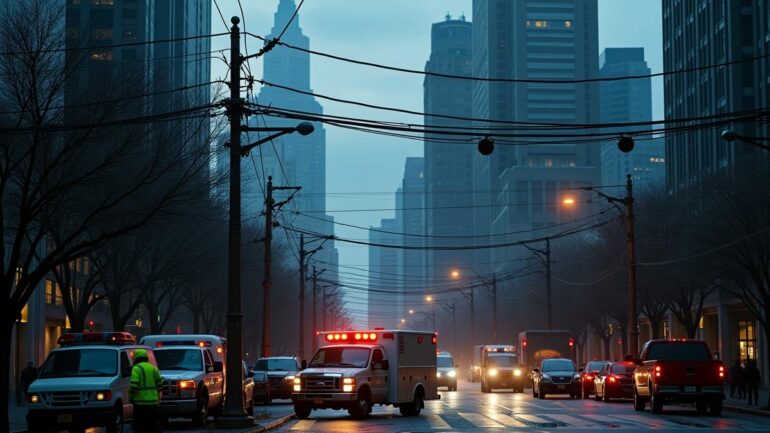Most people don’t think about their commercial roof until there’s water dripping through the ceiling. And by that point? You’re already playing catch-up.
Thing is, roofs don’t suddenly fail out of nowhere. They give you warnings. Subtle at first—then not so subtle. Knowing what to look for can save you thousands in emergency repairs and help you plan ahead instead of reacting in a panic.
So let’s talk about the signs your commercial roof is trying to tell you something’s not right.
1. Leaks That Keep Coming Back
A single leak? Annoying, but manageable. When it becomes a pattern, though—water marks on the ceiling, damp walls, wet spots near vents or light fixtures—you’re looking at a bigger issue.
If repairs only seem to hold for a few months before another leak shows up, chances are you’re not dealing with isolated issues. You’re seeing the symptoms of a failing roof system. At that point, continuing to patch things is just throwing good money after bad. Let experts like Great Lakes Commercial Roofing assess your roof and advise you on whether it’s time for a replacement.
2. The Roof Surface Looks Rough—or Just Wrong
You don’t need to be a roofing expert to spot trouble. If the top layer of your roof is cracked, peeling, bubbling, or shrinking, it’s a pretty clear sign the materials are breaking down.
This kind of damage doesn’t just look bad—it creates pathways for water to get in. Blisters or bubbles can mean moisture is trapped beneath the surface. Cracks or splits open up the membrane and weaken the roof’s protective layer.
Even worse? This kind of wear tends to spread. Once one area starts to go, the rest often follows.
3. Water Isn’t Draining Like It Should
Flat commercial roofs are supposed to be designed with drainage in mind. If you’re noticing standing water that’s still there a day or two after it rains, that’s a problem.
Ponding water speeds up deterioration, adds unnecessary weight, and puts stress on the roof deck. Over time, that leads to leaks, sagging, and—if ignored—potential structural issues.
And while you might not see the damage right away, water that sticks around always finds a way in.
4. Repairs Are Becoming a Routine (And Not in a Good Way)
Ask yourself: how often are you calling someone out to fix this roof?
A repair once every few years isn’t a big deal. But if it’s becoming a regular line item in your budget, that’s a sign the roof has reached the end of its reliable life.
Not only are you spending more on stop-gap fixes, you’re also gambling with the risk of bigger damage. At some point, replacement becomes the smarter—and surprisingly more cost-effective—option.
5. The Roof Structure Seems… Off
Notice any parts of the roof that look like they’re sagging or dipping?
That’s more than just a visual issue. Sagging areas can mean trapped moisture, weakened decking, or overloaded spots from HVAC units or years of poor drainage.
Even if there’s no leak yet, a roof that’s losing its shape is a roof that’s struggling. And the longer you wait, the more expensive it gets to fix.
6. Energy Bills Keep Creeping Up
One of the sneakier signs your roof needs replacing isn’t water-related at all—it’s your utility bill.
When insulation becomes saturated or compressed, or if the roofing material is breaking down, it affects the building’s ability to hold temperature. Heating and cooling systems have to work harder, and that shows up in your monthly costs.
If you’ve ruled out equipment problems and your building’s usage hasn’t changed, the roof might be the culprit. It’s often overlooked, but a failing roof can silently rack up energy waste for years.
7. It’s Simply Old
Roofs don’t last forever. Most commercial systems are built to last somewhere between 15 and 30 years, depending on the material and how well it’s been maintained.
If your roof is hitting that age range—and especially if you’re noticing any of the issues above—it’s time to start thinking seriously about replacement. Waiting for a dramatic failure might force you into emergency repairs, which are always more expensive and disruptive.
Better to plan and budget on your terms than to scramble when the roof gives out completely.
Don’t Let the Roof Call the Shots
Here’s the thing—your commercial roof won’t tap you on the shoulder and tell you when it’s done. But it will show signs. Leaks that never fully go away, surface damage, drainage issues, mounting repair costs… they’re all nudges toward a bigger decision.
The earlier you recognize those signs, the more options you have. You can plan the timing, budget for the investment, and avoid downtime or interior damage that hurts your business.
And if you’re not sure where your roof stands? That’s okay. Bring in a professional inspection, get a real assessment, and go from there.
Waiting only makes the decision more urgent—and more expensive.





